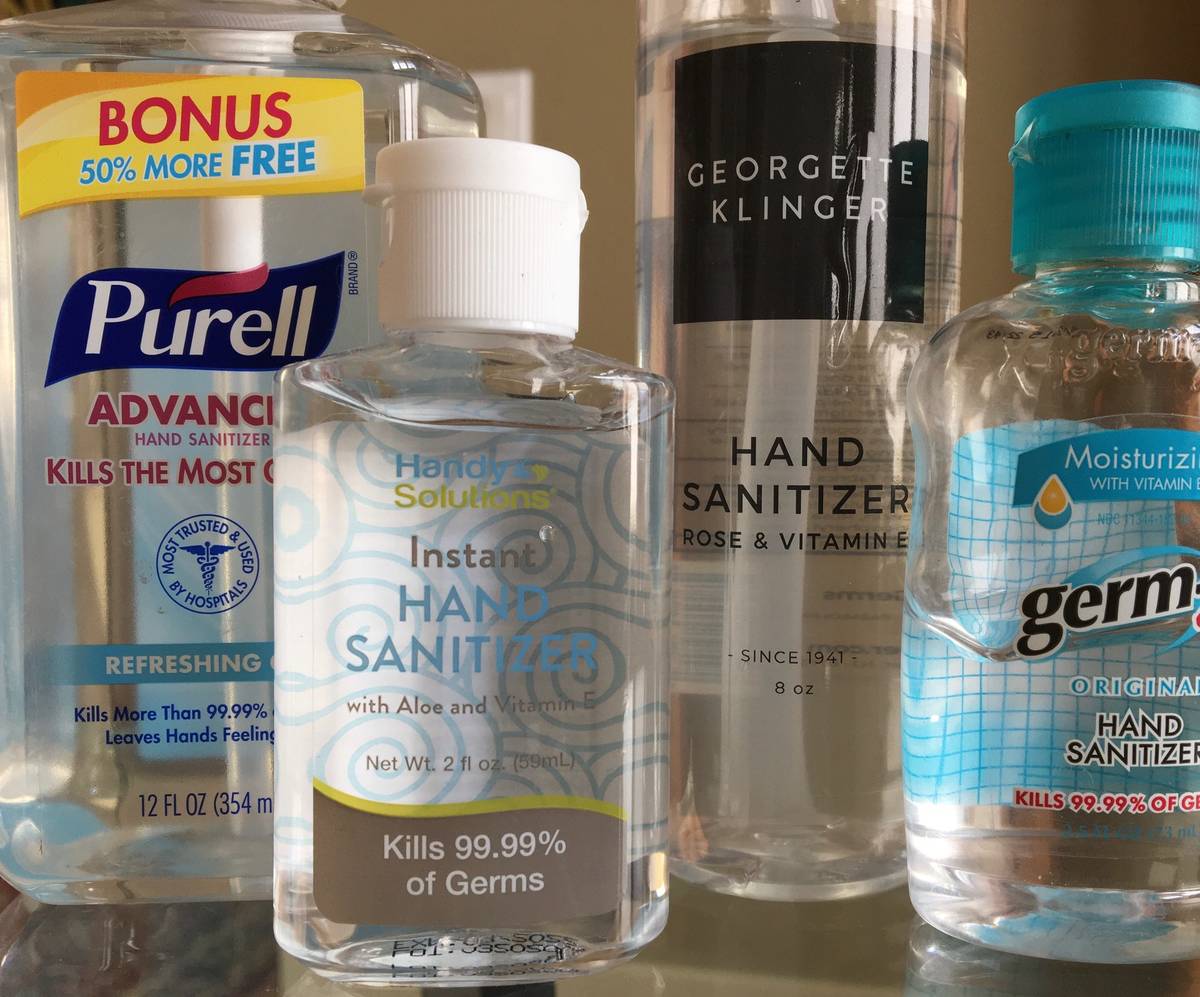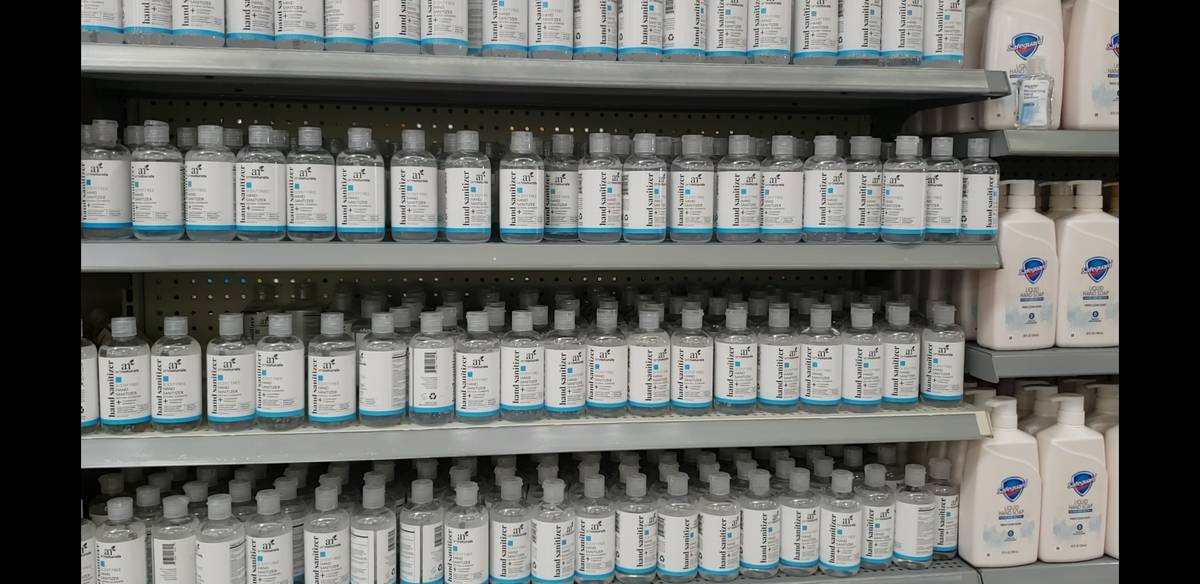Some hand sanitizer choices mean weird smells, new safety warnings
If you’ve been able to buy a bottle of hand sanitizer in the past two months, it’s likely the smell has changed, and not for the better.
All the rose, lavender, and citrus scents aren’t enough to cover a strong chemical odor or notes of rotten corn, common with new disinfectant products produced quickly under pandemic health needs.
If that’s not enough, the Food and Drug Administration warned consumers July 27 about dozens of brands that contain methanol, a toxic chemical that can pose a serious danger when absorbed through the skin or ingested. Methanol is often used to make fuel or antifreeze.
The FDA routinely tests hand sanitizers for methanol and has issued warnings since June about specific brands that are contaminated plus other brands produced in the same facilities. Some sanitizers had up to 81 percent methanol. Check those brands on the FDA site.
For approved sanitizers, the main ingredient is alcohol, specifically ethanol. It’s the same stuff found in a liquor store — but, of course, hand sanitizer is not drinkable. In concentrations over 60 percent, ethanol kills most bacteria and viruses.
As supplies dwindled when the coronavirus hit, manufacturers ranging from local distilleries to large-scale operations stepped up to meet the new demand.
Underground product
The Underground at Las Vegas’ Mob Museum has been making hand sanitizer for a few months from liquor in-house based on an FDA recipe for small-scale operations like distilleries.
According to museum educator Jim Zlomke, the difference in the smell is the lack of extra ingredients. The Purell and Germ-X of the past had extra ingredients to mask the strong smell of alcohol, but the active ingredient is the same.
“Purell would add perfumes, they would add polymers and things to cause it to jell. The (FDA) recipe doesn’t include any of that,” Zlomke said. “Our primary goal isn’t to meet the needs of making it smell pretty and smell good; it’s to meet the emergency health needs during the pandemic.”
Despite the strong alcohol scent — the Mob Museum’s sanitizer smells strongly of moonshine — it’s safe to use on the skin.
Making a basic hand sanitizer isn’t a big shift from moonshine production, Zlomke said. The museum makes its alcohol in a process called distillation, in which a liquid with a low percentage of alcohol is evaporated, or turned into a gas, and then converted back into a liquid, separating water and other contaminants from the ethanol.
This process is repeated multiple times, and each round results in a moonshine with a higher percentage of alcohol.
They aim for a percentage of ethanol higher than 80 percent, which requires more rounds of distillation than for drinkable moonshine. Added ingredients make the hand sanitizer dangerous to consume, though the base alcohol is the same.
First, they add a mixture of chemicals called denaturants, which make the solution bitter-tasting and induce vomiting if ingested. Second, they add hydrogen peroxide, which will kill any lingering microbes in the solution. They finally add a small amount of a chemical called glycerol, which is moisturizing for the skin.
The purity of the alcohol makes a big difference in the smell: Pure alcohol has a pungent, burning scent, but some hand sanitizers smell like rotten vegetables or tequila. That “barnyard-ey stench,” as Zlomke called it, is due to less pure alcohol.
The moonshine base is made from fermenting corn meal, and in a robust distillation process, like the Mob Museum’s, most of that stench goes away. If your hand sanitizer smells like rotten corn, that’s because it was actually made from corn, and probably wasn’t distilled enough. A purer alcohol will make for top-shelf moonshine and a less stinky hand sanitizer.
Toxic chemicals
UNLV biochemistry professor Ernesto Abel-Santos compared the process to drinkable liquor. Mezcal and top-shelf tequila are both made from agave, but the smell and flavor can be vastly different.
“Mezcal tastes very raw,” Abel-Santos said. “A good tequila doesn’t even smell; you will basically only smell the alcohol.”
Using poorer distilled alcohol will leave remnants from the fermented base, whether that’s corn or sugar or another plant. Sloppy distilling can also leave behind toxic chemicals like methanol, though unrelated to the foul smell.
“Methanol has just one less carbon (than ethanol), but it becomes toxic,” Abel-Santos said. “When it’s metabolized by the liver, it becomes formaldehyde.”
Ingesting danger
The greatest danger of methanol-based hand sanitizer comes from ingesting it, Abel-Santos said. Consuming hand sanitizer with ethanol would make you sick, but ingesting methanol can actually blind or kill you.
Sanitizer made in distilleries like the Mob Museum’s does not pose a great risk of methanol contamination, because most methanol is separated out early in the distillation process.
There may be some traces of methanol in its sanitizer, but the amount is well below FDA guidelines, according to Desiree Webb, a representative from the museum.
“Any hand sanitizer, including ours, would be dangerous if consumed,” Webb said in an email. “This is why denaturing ingredients are so important and why parents need to supervise their children’s use.”
Consumers won’t find methanol as an ingredient on the back of the bottle, but as long as the brands on the FDA’s list are avoided, hand sanitizer is still safe when used properly.
Marina Philip is a 2020 Mass Media reporting fellow through the American Association for the Advancement of Science. Email her at mphilip@reviewjournal.com. Follow her on Twitter at @mureeenuh.































